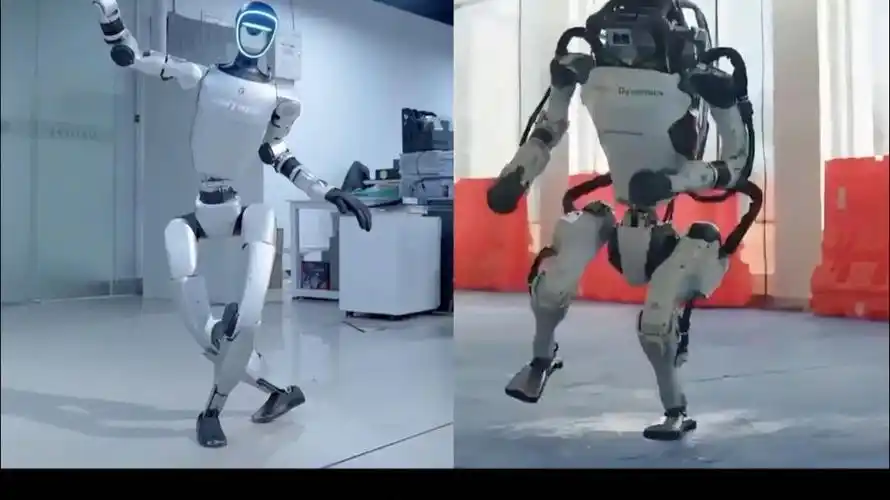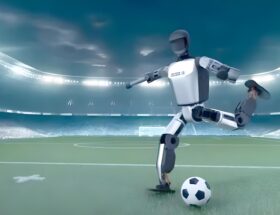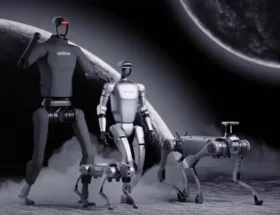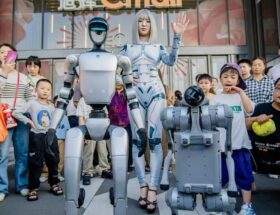Yushu Robot and Boston Dynamics Robot have formed differentiated competition in terms of technology path and market positioning. The following objective comparative analysis is conducted from five dimensions: motor, system, material, stability, and cost-effectiveness:
1、 Motor Technology: The Game between High Torque Density and Scene Adaptability
Yushu’s self-developed M107 articulated motor leads the industry with a torque density of 55.37N · m/kg. Its peak torque of 360N · m and weight of 1.9kg design ensure dynamic performance while compressing costs to 1/50 of hydraulic systems. For example, the knee joint motor of H1 humanoid robot cooperates with servo drive through a reducer to achieve a potential motion capability of 5m/s. In contrast, Boston Dynamics’ early hydraulic driven Atlas hip joint had a torque of 840N · m, which was advantageous in extreme load scenarios such as heavy lifting. However, its hydraulic system had high energy consumption and complex maintenance. After turning to electric drive, Atlas’s motor parameters were not yet disclosed and relied on high cost customized solutions. Yushu’s motor technology focuses more on balancing cost and energy efficiency in civilian scenarios, while Boston Dynamics still has irreplaceable performance in industrial high load fields.
2、 Control System: The Difference between Distributed Architecture and Complex Algorithms
Yushu adopts a distributed control architecture, achieves low latency communication of<1ms through CAN bus, and combines reinforcement learning algorithm to control the center of gravity deviation within ± 1.5 centimeters. For example, the G1 humanoid robot has a joint torque error rate of less than 3% during rollover and can complete fall recovery within 3 seconds. The BeamDojo framework enables autonomous crossing of complex terrains such as plum blossom piles and balance beams, with a success rate of 95.67%. Although Boston Dynamics’ control system leads in algorithmic depth (such as Atlas’s backflip and parkour actions), the complex control logic of its hydraulic system is difficult to adapt to low-cost scenarios. After turning to electric drive, it still relies on high-precision sensors and customized AI models, with long development cycles and high costs. Yushu’s control system has advantages in dynamic balance and response speed in conventional scenarios, while Boston Dynamics still maintains a benchmark position in laboratory level high difficulty movements.
3、 Material and craftsmanship: the trade-off between lightweight and extreme environmental durability
Yushu balances performance and cost in material selection. The carbon fiber skeleton of H1 is made of T800 grade composite material, which reduces weight by 40% compared to aluminum alloy. At the same time, topology optimization design is used to reduce structural redundancy, and the overall weight is controlled at 47kg. This solution supports complex actions such as backflips and can complete prototype assembly within 3 days relying on the Chinese supply chain. Although Boston Dynamics’ Atlas uses CFRP joint brackets (reduced by 45%) and titanium alloy components, with a bending modulus of 230GPa and the ability to withstand 10 times its own weight impact load, its material cost is high and it relies on a global supply chain, with a production cycle of several months. Yushu’s material scheme is more suitable for mass production and civilian scenarios, while Boston Dynamics still has material advantages in extreme environments such as military and scientific research.
4、 Stability performance: differentiation advantage between conventional scenes and complex terrain
The stability performance of Yushu robot is outstanding in conventional scenarios. G1 achieves real-time environmental perception through multimodal sensor fusion (3D LiDAR+IMU), and remains unchanged in anti overturning tests, with an average fault free time of over thousands of hours for joint modules. Boston Dynamics’ Atlas demonstrates excellent stability in complex terrains, such as real-time adjustment of posture to maintain balance while walking in snowy jungles, but its hydraulic system maintenance frequency and cost are significantly higher than Yushu’s. The stability difference between the two is due to the choice of technical route: Yushu compensates for hardware shortcomings through algorithm optimization, while Boston Dynamics relies on hardware performance to cope with extreme conditions.
5、 Cost effectiveness advantage: the coexistence pattern of price disruption and high-end market
Yushu has completely broken the price ceiling through full stack self-developed technology. The quadruped robot Go2 starts at only 9997 yuan, while the humanoid robot G1 costs 99000 yuan, which is 1/50 and 1/10 of Boston Dynamics Spot ($75000) and Atlas (over a million yuan), respectively. This pricing strategy will result in a global market share of nearly 70% for quadruped robots by 2024, with sales reaching 23700 units, far exceeding Boston Dynamics’ 2000 units. Although Boston Dynamics remains irreplaceable in high-end markets such as military and research, its high cost limits its commercial scale. The cost-effectiveness advantage of Yushu comes from the “engineer dividend” of China’s supply chain – independent mass production of core components with a production cycle as short as 3 days, while Boston Dynamics relies on imported high-precision components, with Optimus’ planetary roller screw alone accounting for 14% of the total machine cost.
summary
Yushu Technology takes breakthroughs in motor technology as its core, and through distributed control, lightweight materials, algorithm optimization, and supply chain integration, it has formed a comprehensive suppression of Boston Dynamics in terms of cost-effectiveness and practicality. Although Boston Dynamics still has advantages in extreme sports performance and laboratory level technology, its high cost and commercialization challenges make it difficult to adapt to the demands of the civilian market. Yushu’s model is more in line with the current trend of the robot industry transitioning from “technology first” to “pragmatism”, and is expected to replicate DJI’s success in the field of drones in the future. The competition between the two is essentially a collision between the “cost-effectiveness revolution” and the “tech geek route”, jointly promoting the penetration of robot technology into a wider range of application scenarios.



